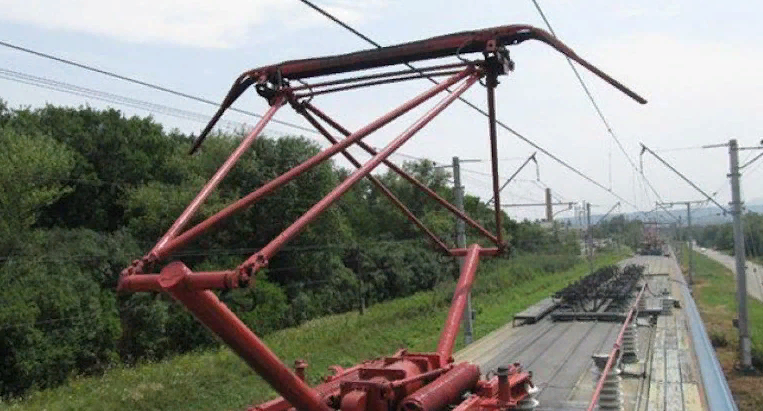
The railway is a place of increased danger, there is no secret. On the tracks, you can at least get an electric shock, and at most - an electric shock. “But the railway system is different from the metro, right there instead of a contact rail, an overhead power line - what other electric shock?” - You will be indignant and will be partly right. You won’t be able to touch the line, but the lack of high-voltage wires in the public domain does not mean that the same rails are completely de-energized.
Every day, dozens of people lie on the railway tracks near the Indonesian village of Rawa Baya. No, the residents are not in a hurry to put an end to life, they are trying in an exotic way to treat chronic diseases on the contrary, using medical voltage supplied to the rails. It all started with the fact that once a paralyzed local guy laid down on the rails. Just to bring the scores to life. But something went wrong, and he wondered unexpectedly from the electric shock. This legend has no evidence, which does not stop local residents from practicing electroshock rail therapy.
How effective is this treatment? Let's get it right. The electric train removes current either from the contact rail, if we are talking about the subway, or from the overhead power line. The voltage on them is 750–900 and 3,000 volts, respectively. On railways, electrified with direct current, as well as in the subway, the positive polarity of the contact network is accepted: the "plus" is fed to the contact wire or rail, the paths act as a "minus".
Since the rails are the return “wire” in this circuit, and it is almost impossible to isolate them from the ground, part of the traction current branches off. These currents are called “stray”. Their direction is almost impossible to predict. Stray currents flow not only in the ground, but also along the metal parts of various underground structures encountered on their way. Since there is a potential difference between the metal (rail, pipeline) and earth, electrolysis occurs in these zones and electrochemical corrosion of the metal occurs.
In addition, a weak current flows along conditionally “zero” rails with its own code (not software, but interval, the current is supplied by pulses). This is necessary for traffic light signaling about a free or busy track span and for monitoring the integrity of railway tracks. Over the entire length, the rails are divided into sections (sections), which in turn are divided into block sections, along the borders of which traffic lights are installed. Passing through the next block section, the electric train closes the circuit, relay cabinets installed along the path decode the signal and give the desired traffic light indication. Red - the block section is busy, yellow - only the nearest block section is free, green - two or more block sections are free.
The second function of a weak current flowing along the rails is integrity control. If, God forbid, a chain break appeared in some section, then the information immediately goes to the dispatcher's control panel and the repair team is sent to the break point.
Theoretically, you can close this low-current circuit with something large and metallic. In this case, an electric shock does not threaten you, but there is a threat of disassembly with the police, since such manipulation also affects the controller’s remote control. So the railroad tracks are in fact a place of increased danger, but you will not be able to get an electric shock from walking on rails, just as you do not try. And do not try to be treated with railsetrapiya, because this is a dangerous and meaningless exercise.